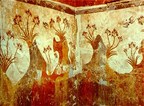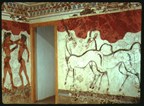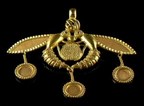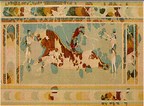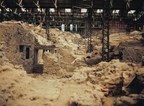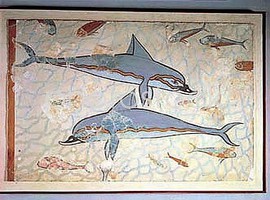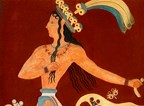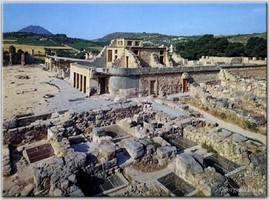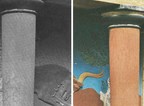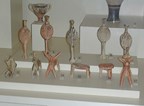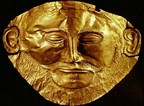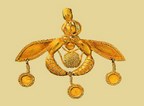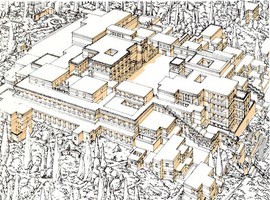The Minoan civilization was basically named after the name of a King Minos who ruled on Crete for a long period of time. This era is known as the Bronze Age and is divided into three parts. The Minoan civilization originated from the Stone Age and passing through the evolutionary process for an extended period of time entered the Bronze Age. They used to import and use certain metals like bronze. The other evolutionary steps involved the formation of hieroglyphic writing, and the building of unique palaces in Knossos. They also worked on carving of ivory along with working in metals. During the second part of this era, the Minoan culture focused on their naval power which was really extended across the Mediterranean. They really worked hard to improve their defense powers. In the third and last part of this era, Minoan was hit by severe earthquake which destroyed Knossos and then unfortunately the Mycenaeans invaded the Minoan culture.
After that for an area ranging from 1400 BCE to 1600 BCE, Crete exhibited both the Mycenaean and the Minoan civilization. In that duration both of these cultures were trying to have a control over the Mediterranean. The Mycenaeans basically belonged to the mainland of Greece but when they were side by side with the Minoan culture they struggled hard to learn the basic skills from the Minoan culture. After acquiring these skills they started the work on ivory and gold and soon became well known for their antique work. The ships of Mycenaeans reached the Asia Minor while traveling through the Aegean Sea. In spite of the fact that the Mycenaeans adopted the skills of the Minoan culture, the way they built their cities were quite different from that of the Minoan art. Mycenaean cities were heavily equipped in contrary to the Minoan cities which were not as such fortified. Mycenaean palaces consisted of big halls while there were open spaces in the Minoan palaces. One of the differences between the Mycenaean and the Minoan men was that the Mycenaean men have beards and they wear armor in the battlefield while the Minoan men did not. The Minoan and the Mycenaean culture differed significantly, but both were equally powerful and distinct.
Minoan civilization was well-known for its naval powers and armors in an area ranging from 15th century BC up to the 27th century. In the early times of the 20th century a British archaeologist named Arthur Evans worked on the history of this civilization. Another man was Will Durant who worked on this civilization and recognized it as “the first link in the European chain”. According to his study, almost 130,000 years ago there existed the Hominids on Crete. This was probably the Middle Paleolithic age. Certain evidences found at the Preveli Gorge in the southern Crete indicated the type of axes made by using quartz in place of flint which are now found in Africa. The Minoan civilization on Crete justifies its roots from the Bronze Age when they tend to build palaces. You cannot find the association between the Minoans and any more ancient peoples of Crete. According to most of the archeologists, the term ‘Minoan’ was suggested by Arthur Evans. But the fact which is obvious from the history is that the term “Minoan” was specifically used for the renowned king Minos referring to his luxurious life and all other belongings including his men, the places and certain other things. Evans was not inclined to take the myth seriously. He was of the view that Minos has been just a title only which could be used for any king of the Crete. Evans tried his best to prove that this myth was not as serious part of history as most of the people think. When Evans made his journey to Knossos to study the classics which were already being exploited by Heinrich Schliemann who was also working on the archaeological ruins of the swineherd’s hut in the Odyssey.
The Minoan culture exhibits the most unique Minoan unnatural palaces which were considered the most beautiful and distinctive art pieces of that time. Most of the archeologists tried to excavate these places on the island. The evidences collected by various archeologists indicated that these places were probably used for the administrative purposes. Almost all the palaces were excavated by the archeologists all over the world and they disclosed that these palaces exhibit certain matchless features. These incomparable features sanctify these palaces from that of all other infrastructures. The building of these palaces mostly consisted of huge columns, wide courtyards and storage magazines. Most of the palaces were multi-Storeyed, so they were equipped with staircases both interior and exterior. Some of the palaces also contain light wells. Most of the archeologists suggest that after the Neolithic era the Minoan civilization on Crete became a mixture of two cultures. One was the West Asian and the other called the North African. It was also recommended that the Minoan people were not actually the Indo-European but the Pelasgians who lived on the Greek mainland and Western Anatolia. During the Bronze Age the Minoan Crete developed its discrete and independent civilization which was said to be the most advance forms of civilization. The reason for this development of civilization was that the Minoan Crete was not invaded by anyone for a long period of time so plenty of time was available to excel. During this era their culture achieved the maximum degree of improvement.
Most of the archeologists revealed that the Minoans were basically merchants who remain busy in trade. They are of the view that the Minoan people were engaged in the trade of tin during the Bronze Age. They import tin from Cyprus and use it in the manufacturing of bronze by making its alloy with the copper. Later with the use of iron tools instead of the ones made of bronze cause a proved to be a cause of the decline of the Minoan civilization along with the decline of Bronze Age.
